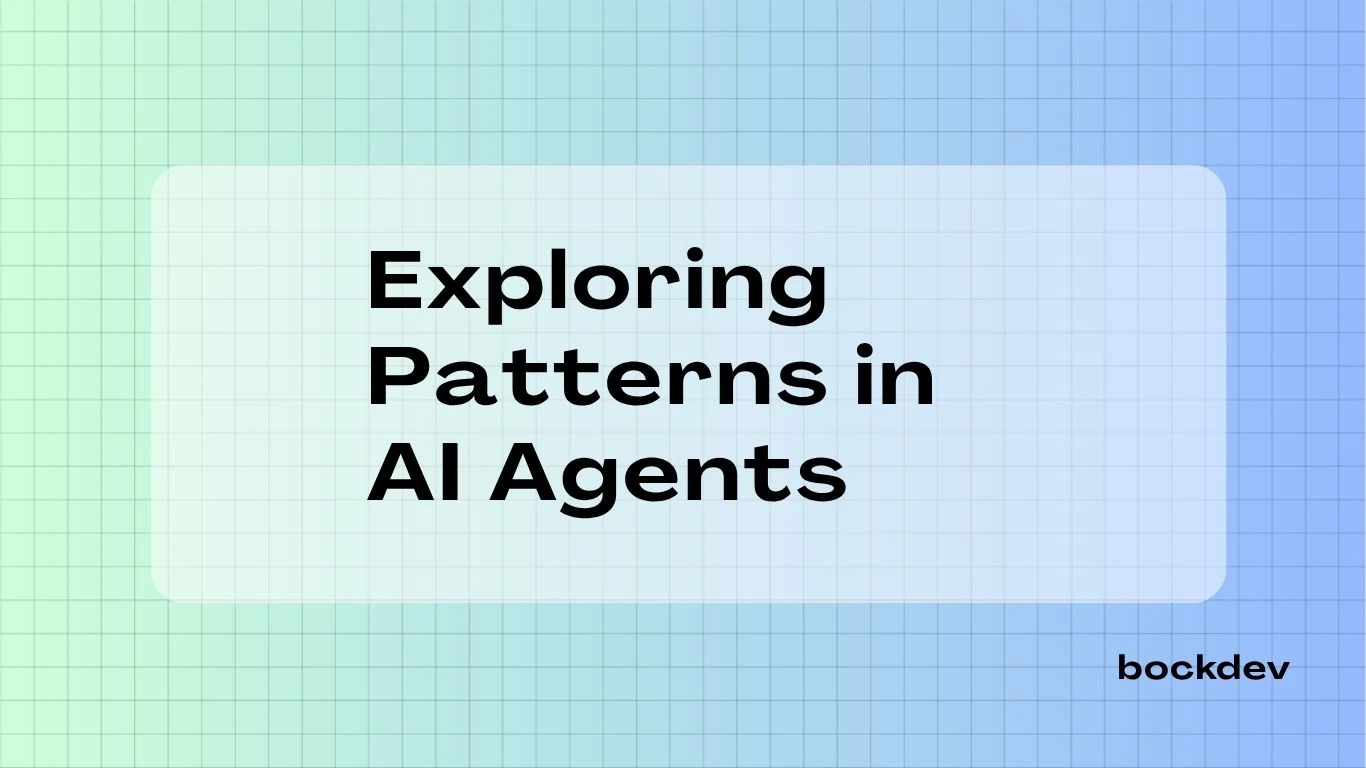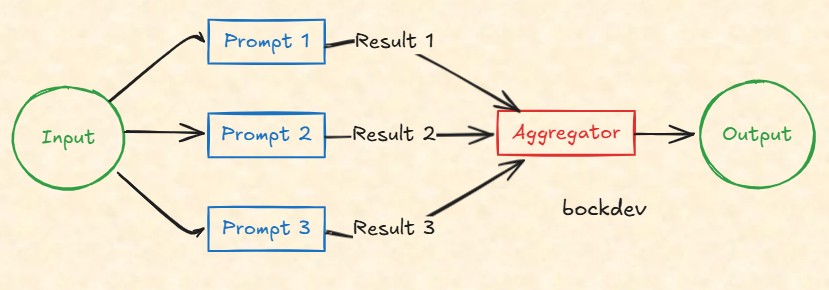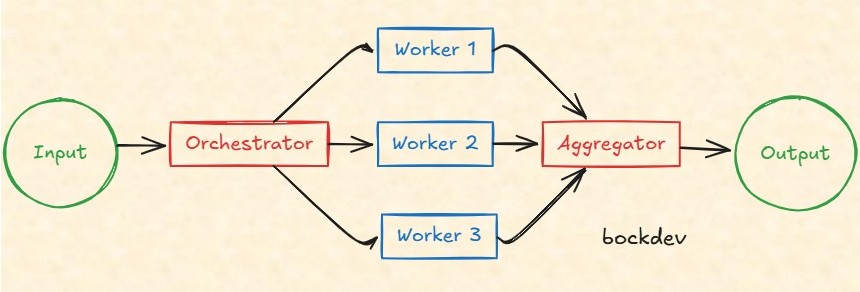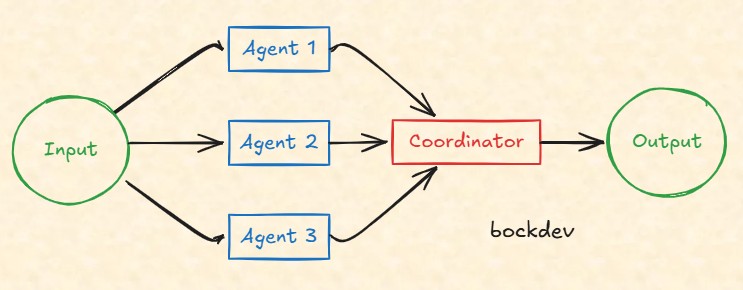
AI agent patterns provide a powerful foundation for building intelligent, adaptable systems. By structuring interactions and task flows, they enable clarity, collaboration, and efficiency. This makes them essential for scaling advanced AI solutions across diverse applications and real-world scenarios.
Agent patterns are structured blueprints for designing how AI agents interact, process inputs, and generate outputs. They define workflows like chaining, routing, or collaboration to solve tasks efficiently, enabling more modular, scalable, and intelligent AI systems.
Why Agent Patterns Matter?
Agent patterns improve AI system design by promoting clarity, modularity, and reusability. They help manage complexity, enable specialization, and ensure robust task handling for leading to more efficient, explainable, and scalable AI solutions across varied use cases.
When to Use Agent Patterns?
Use agent patterns when building complex AI systems that require stepwise logic, intent handling, collaboration, tool use, or evaluation. They’re ideal for workflows needing structure, scalability, or quality control beyond what a single prompt or agent can handle.
Here are the different types of AI agent patterns, each designed to structure how agents operate, collaborate, and solve tasks efficiently within intelligent systems.
Prompt Chaining Pattern

A linear process where each prompt's output feeds into the next prompt. This sequential chaining refines reasoning or builds complexity step-by-step, enhancing coherence for tasks like summarization and question answering.
Use when -> A task requires multiple reasoning steps, it often benefits from a structured approach where the input is progressively refined or transformed at each stage. In such cases, the final output relies heavily on intermediate interpretations, making a step-by-step process essential for accuracy and coherence.
Benefits of using Prompt Chaining Pattern
High accuracy: Allows refinement at each step, reducing errors by correcting or enriching intermediate results.
Modular debugging: Easier to trace and improve individual steps of the reasoning process.
Step-by-step reasoning: Each stage builds on the previous output, making it ideal for complex tasks requiring logical progression.
Examples of using Prompt Chaining Pattern
| Question | Use Case | Process |
|---|---|---|
| How to turn a long text into a clear, concise summary? | Text Summarization | First, extract key points, then condense the content, refine it for clarity, and format the final summary. |
| How to solve math problem accurately and clearly? | Math Solver | Begin by understanding the question, then translate it into a formula, solve it, and explain the steps clearly. |
| Is this stock a good investment based on fundamentals? | Stock Screening | Start by retrieving financial data, evaluate key metrics and indicators, and finally recommend an investment rating or decision. |
Routing Pattern

A prompt router identifies the user’s input and directs it to the appropriate agent. Each specialized process handles specific prompts, enabling modularity and task specialization. All results are then combined to form a unified output.
Use when -> You expect different types of user prompts, and tasks can be split across specialized processes. This setup supports a scalable system capable of handling diverse inputs dynamically.
Benefits of using Routing Pattern
Efficiency: Reduces processing overhead by avoiding unnecessary prompt execution.
Scalability: Easily expandable by adding more specialized branches without changing the core flow.
Task specialization: Directs input to the most suitable prompt/agent for the task, improving response quality.
Examples of using Routing Pattern
| Question | Use Case | Process |
|---|---|---|
| How to identify and respond to various types of user input? | AI Chatbot | Recognize whether the input is a command, question, or complaint, then trigger the right response. |
| How to manage multiple finance-related tasks seamlessly? | Finance Bot | Route requests like "Check balance," "Analyze expenses," or "Track investments" to specific agents. |
| How to handle different customer queries efficiently? | Customer Service Assistant | Detect the user’s intent and route queries to billing, tech support, or shipping agents. |
Parallelization Pattern

Multiple prompts run simultaneously on the same input, generating diverse outputs. An aggregator combines or compares these results to deliver a single, enriched output. This improves robustness, creativity, and coverage of the final response.
Use when -> You want multiple perspectives or methods applied to the same input, especially when speed is important and parallel execution can reduce latency. This pattern is also useful when diversity or redundancy in output enhances the quality or reliability of results.
Benefits of using Parallelization Pattern
Faster execution: Runs multiple prompts at the same time, reducing total response time.
Diverse output: Useful when exploring multiple interpretations or answers concurrently.
Redundant paths: Increases reliability by providing multiple angles or solutions to a single input.
Examples of using Parallelization Pattern
| Question | Use Case | Process |
|---|---|---|
| How to generate varied content styles quickly? | Content Generation | Generate article introductions simultaneously in different tones, such as formal, casual, and persuasive. |
| How to gain deeper emotional insights from text? | Sentiment Analysis | Run multiple models in parallel to analyze emotion, tone, and intent for a more nuanced result. |
| How to compare products effectively from different attributes? | Product Matching | Compare products based on features, pricing, reviews, and compatibility to identify the best fit. |
Evaluator-Optimizer Pattern

An evaluator reviews the generated output for quality. If good, the result is accepted; if not, an optimizer iteratively refines it. This feedback loop ensures high-quality outputs and is useful in quality-sensitive generation tasks.
Use when -> Output quality requires assurance and ongoing refinement. This pattern is ideal when you need a self-improving loop that identifies and revises weak or inaccurate responses. It's especially useful when mistakes must be automatically detected and corrected without manual intervention.
Benefits of using Evaluator-Optimizer Pattern
Self-improving loop: Feedback-driven optimization enables learning or tuning of prompts.
Quality assurance: Automatically filters poor outputs and promotes only high-quality results.
Consistent outputs: Maintains a standard by enforcing quality checks before delivering responses.
Examples of using Evaluator-Optimizer Pattern
| Question | Use Case | Process |
|---|---|---|
| How to ensure the generated code is both correct and clean? | Code Generator | Write code, evaluate for syntax and correctness, then refactor or retry if issues are found. |
| How to improve the clarity and quality of written content? | Blog Writer | Create an initial draft, evaluate clarity, and rewrite weak or unclear sections. |
| How to increase the effectiveness of marketing messages? | Ad Copywriting | Generate ad content, assess its conversion potential, and revise it to enhance impact. |
Orchestrator-Workers Pattern

An orchestrator delegates tasks to multiple specialized workers. Each processes a different aspect of the input. Their outputs are aggregated to produce a final result. This pattern scales well for complex or high-volume tasks.
Use when -> A task is too complex for a single agent to handle effectively. This pattern is useful when you need to break the task into sub-tasks and assign them to specialized agents. The final output is then synthesized from these modular contributions.
Benefits of using Orchestrator-Workers Pattern
Dynamic delegation: Distributes sub-tasks across specialized agents for parallel processing.
Scalable complexity: Handles large or multi-layered tasks efficiently by breaking them into parts.
Central coordination: Maintains global control, ensuring coherent final results.
Examples of using Orchestrator-Workers Pattern
| Question | Use Case | Process |
|---|---|---|
| How to provide personalized fitness advice across key areas? | Fitness Assistant | Separate agents generate tailored diet plans, exercise suggestions, and sleep tips independently. |
| How to efficiently generate structured reports from raw data? | Report Generation | An orchestrator delegates tasks like data summarization, insight extraction, and recommendations to separate agents. |
| How to extract and format website content in a clean workflow? | Website Scraper | One agent fetches HTML, another extracts relevant data, and a third formats it for output. |
Tool Use Pattern

An agent analyzes input and routes it to the most suitable tool like image generator, search tool and code interpreter. Tool-specific outputs are unified to form a comprehensive result. Ideal for multi-modal or technical queries.
Use when -> Tasks require specialized capabilities such as math solving, coding, or information retrieval. This pattern is ideal when input must be dynamically routed based on its type, and when you want LLMs to act as controllers that select and operate the appropriate tools to complete the task effectively.
Benefits of using Tool Use Pattern
Precision: Selects the most accurate tool for each problem type, improving performance.
Versatility: Integrates various tools (e.g. search, code, math) depending on the task needs.
Contextual tool switching: Adapts dynamically based on input, improving adaptability.
Examples of using Tool Use Pattern
| Question | Use Case | Process |
|---|---|---|
| How to handle complex coding-related queries across systems? | Coding Agent | Uses MCP to route tasks to tools like codebase search, static analyzers, interpreters, schema readers, or APIs. |
| How to manage different types of travel-related requests efficiently? | Travel Agent | Uses web search to handle flight booking, hotel reservations, and route planning. |
| How to agent assist with workspace tasks across apps? | AI Sheet Assistant | Generates or edits spreadsheets, then schedules emails and calendar events via Gmail and Google Calendar. |
| How to create visuals based on text prompts or concepts? | Image Generator | Uses diffusion models or generative tools to interpret prompts, render visuals, and output formatted images. |
Multi-Agent Pattern

Multiple agents process the same input independently, each contributing unique insights. A coordinator combines their outputs into one final response. This structure encourages diversity of reasoning and collaborative problem-solving across agent specialties.
Use when -> You want collaboration among agents with diverse strategies, especially when a single perspective isn’t sufficient to solve the problem. It’s also ideal when redundancy helps boost reliability, accuracy, or creative output.
Benefits of using Multi-Agent Pattern
Flexible composition: Easy to plug in new agents with minimal changes to overall design.
Redundancy and resilience: Multiple agents can cross-verify and strengthen final output.
Collaborative problem-solving: Agents approach the same task from different perspectives.
Examples of using Multi-Agent Pattern
| Question | Use Case | Process |
|---|---|---|
| How can startup founders get holistic advice across domains? | Startup Consultant | Legal, finance, and tech agents collaborate to provide a unified response. |
| How to analyze a business from multiple perspectives? | Business Strategy Assistant | Agents assess market, competitors, and risks in parallel, then merge their insights. |
| How to generate a video with diverse creative input? | Video Generation | Agents independently draft script, visuals, and audio elements, then combine them into a final output. |
Conclusion
AI agent patterns offer a structured approach to building intelligent systems. By organizing how agents work together and handle tasks, these patterns ensure clarity, flexibility, and efficiency. They are key to creating scalable, reliable, and effective AI-driven applications and workflows.
